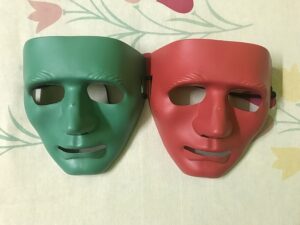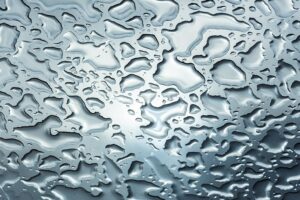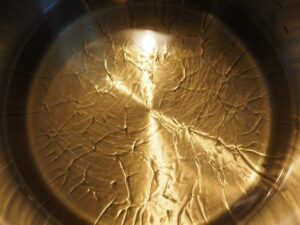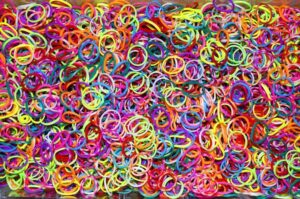Thermal insulators reduce heat transfer. Examples include aerogel (R-value up to 10.3 per inch), vacuum insulated panels (R-value 45), fiberglass (R-value 2.2-2.7 per inch), polystyrene (R-value 3.6-5), and mineral wool (R-value 3.0-3.3). Each material’s effectiveness varies with thickness and application.Lets discuss few of thermal insulator in detail
9+ Thermal Insulator Examples are listed below,
Thermal Insulator Examples:-
Water:-
Water is an example of thermal insulator. The electrons which are present in the water they are engage to make chemical bonds for this reasons the electrons are not free to take part in the conduction of heat, for this reason heat could not flow through it. So, water works as a thermal insulator.

Image Credit – Wikimedia Commons
Plastic:-
Plastic is a perfect example of thermal insulator. The electrons which are present in the plastic they are engage to make chemical bonds to each other for this reasons the electrons are not free to take part in the conduction of heat, for this reason heat could not flow through plastic. So, plastic is not good heat conductor it is good insulator.
The plastics types which perfect example of thermal insulator are polyester films, Mylar, Melinex.

Image Credit – Wikimedia Commons
Paper:-
Paper is an example of thermal insulator. Dry papers electrons could not carry electrons just because of the electrons which are present in the dry papers they are engage to make chemical bonds to each other for this reasons the electrons are not free to take part in the conduction of heat, for this reason heat could not flow through paper.

Image Credit – Wikimedia Commons
Glass:-
Glassis an also example of thermal insulator. Thermal insulator means from where heat cannot flow one area to another area. The electrons of the glass could not carry electrons just because of the electrons which are present in the glass they are engage to make chemical bonds to each other for this reasons the electrons are not free to take part in the conduction of heat, for this reason heat could not flow through glass material.

Image Credit – Wikimedia Commons
Styrofoam:-
Styrofoam is another example of thermal insulator. Thermal insulator material means from where heat cannot flow one area to another area among them Styrofoam is. The electrons of the Styrofoam could not carry electrons just because of the electrons which are present in the Styrofoam they are engage to make chemical bonds to each other for this reasons the electrons are not free to take part in the conduction of heat, for this reason heat could not flow through Styrofoam material.

Image Credit – Wikimedia Commons
Dry air:-
Dry air is an example of thermal insulator. Density of the dry air is a vital factor which is affects a matters insulation capability. Density is a physical parameter which depends upon the spacing of the intermolecular of the particles in a matter. For because of dry air is a gaseous matter it can spread particle configure resist heat convection to some degree.
Dry air electrons could not carry electrons just because of the electrons which are present in the dry air they are engage to make chemical bonds to each other for this reasons the electrons are not free to take part in the conduction of heat.
Dry cotton:-
Dry cotton is an example of thermal insulator. From the dry cotton heat cannot flow but from wet cotton heat can flow. Means dry cotton works at insulator and wet cotton works as heat conductor.
The electrons of the dry cotton could not carry electrons just because of the electrons which are present in the dry cotton they are engage to make chemical bonds to each other for this reasons the electrons are not free to take part in the conduction of heat in a system, for this reason heat could not flow through dry cotton material.

Image Credit – Wikipedia
Oil:-
Oil is another example of thermal insulator. The electrons of the oil could not carry electrons just because of the electrons which are present in the oil they are engage to make chemical bonds to each other for this reasons the electrons are not free to take part in the conduction of heat, for this reason heat could not flow through oil material.
The viscosity of the oil is also reason for thermal insulation. The relation between the viscosity and thermal conductivity is when the thermal conductivity is increases

Image Credit – SnappyGoat.com
Rubber:-
Rubber is an example of thermal insulator. The electrons of rubbers are same like another type of thermal insulators. The electrons of the rubber not free to carry electrons just because of the electrons which are present in the rubber they are engage to make chemical bonds to each other for this reasons the electrons are not free to take part in the conduction of heat, for this reason heat could not flow through rubber made materials.

Image Credit – SnappyGoat.com
Frequent Asked Questions:-
Question: – Write the major difference points between the thermal conductor and thermal insulator.
Solution: – The major difference points between the thermal conductor and thermal insulator is discuss below,
| Parameter | Thermal conductor | Thermal insulator |
| Definition | Thermal conductor can be explain as, the material which is allow to flow the heat from one are to another area. | Thermal insulator can be explain as, the material which is not allow to flow the heat from one are to another area. |
| Examples | 1.Silver 2.Iron 3.Aluminium 4.Mercury 5.Brass 6.Copper 7.Bronze 8.Gold 9.Graphite | 1.Water 2.Plastic 3.Paper 4.Glass 5.Styrofoam 6.Dry air 7.Dry cotton 8.Diamond 9.Oil 10.Rubber |
| Movement of electrons | Electron of the materials can flow the heat one area to another without any limits. | Electron of the materials cannot flow the heat one area to another. |
| Electric field | Exist | Doesn’t exist |
| Applications | 1.Insulation 2.Phase change materials 3.Conductive polymers 4.Textiles 5.Batteries 6.Heat transfer fluids 7.Additive manufacturing 8.Automotive and Electric vehicles | 1.Keep home temperature warm in winter season 2. Keep home temperature cool in summer season 3.Keep liquids cool 4. Keep liquids hot |
Question: – Give two examples of Insulation Material.
Solution: – The two examples of Insulation Material are,
Glasswool insulation material:-
Fiber glass insulation material is used almost everywhere. Fiber glass insulation material uses in residential and also in many commercial purposes, industrial applications. The fiber glass insulation material has extremely good quality glass fiber and ubiquitous insulation material. In industries many industrialist produce medium to high density fiber glass insulation material which are higher than the R values than the regular ones.
Benefit using of Fiber glass insulation material:-
- Eco friendly
- High thermal performance
- Light weight
Cellulose insulation materials:-
Cellulose insulation material is used in new buildings and old buildings, ceilings of the cathedral and walls for building cavities. Cellulose insulation material is made with recycled products mainly newspapers are used to make it. Near about 82 percentages to 85 percentages recycled products are used to make this process. In new type of construction cellulose insulation material is used as damp sprayed or dry sprayed.
Benefit using of Cellulose insulation material:-
- Eco friendly
- Economical
- Light weight
- Cost is not too high
- Non combustible
- Easy to install
- Maintenance is very less
Read more about Is Water An Insulator?
Hi..I am Indrani Banerjee. I completed my bachelor’s degree in mechanical engineering. I am an enthusiastic person and I am a person who is positive about every aspect of life. I like to read Books and listen to music.